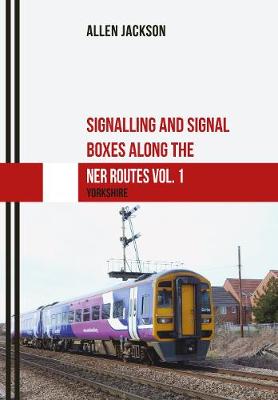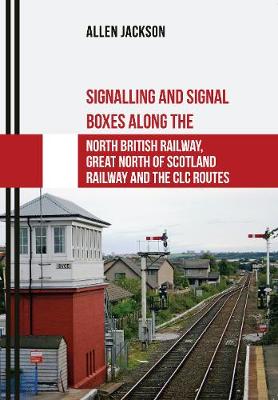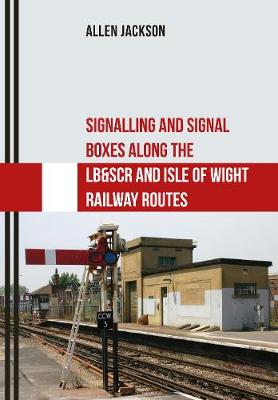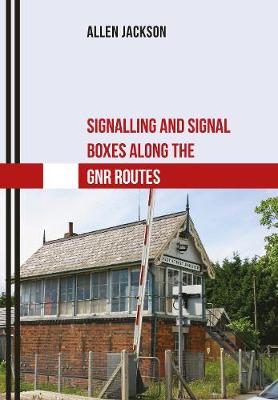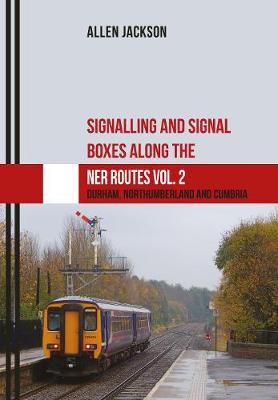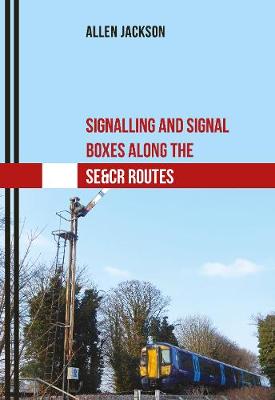Signalling and Signal Boxes
9 total works
Signalling and Signal Boxes along the NER Routes Vol. 1
by Allen Jackson
Although the NER could be likened to the Midland Railway, it was unlike the MR in one respect – it kept to a fairly tight geographic area. This was Yorkshire, Durham, and Northumberland, and in those areas it had a virtual monopoly. The almost only intruder into its territory was the Hull & Barnsley Railway, which the NER absorbed before the grouping.
This first volume provides a comprehensive cross-section of the remaining signal boxes on the NER in Yorkshire, although inevitably some have closed and been demolished, whilst others have been preserved and moved away since the start of the survey.
Signalling and Signal Boxes along the North British Railway, Great North of Scotland Railway and the CLC Routes
by Allen Jackson
The North British Railway took The Flying Scotsman’s baton proudly to Edinburgh Waverley station and generally up the east coast of Scotland on a joint line to Aberdeen. As Edinburgh has been extensively modernised, not much of the NBR has survived, although the West Highland Railway still retains its unique flavour.
The Great North of Scotland Railway joined up Aberdeen with the town of Elgin and although it too suffered from branch line closures, there is enough still there to record its proud individuality.
The Cheshire Line Committee (CLC) was an unusual railway undertaking in that they had no locomotives of their own, but used those from one of its constituents, the Great Central. Duplication of routes followed by BR network culling means that consequently the CLC is a shadow of its former self and little mechanical signalling survives.
Due to ongoing or completed signalling modernisation in the major centres, the book therefore follows mainly secondary and branch lines as these still tend to operate mechanical signalling, being summarily divided up into journeys where that is possible or desirable.
The LNER is most popularly remembered for the Railway Races to the North in the 1870s and trains like the Flying Scotsman and streamlined record-breaker Mallard. The last link with such glory days is the mechanical signalling and signal boxes, many of which have witnessed the LNER’s finest exploits. This way of life is coming to an end and this book records some of the last of the semaphore scene, which in some cases is no longer with us and the rest is on notice.
Although the LNER was the second largest railway company, it had the largest route mileage and area served. From bucolic East Anglian branch lines to the intensity of the Nottinghamshire, Yorkshire, Durham and Northumberland coal fields and the chemical industry and shipping of Teeside. In Scotland the picture was much the same, with the LNER active from the Borders to Inverness.
Although modernised in the 1960s and 1970s, enough of the mechanical signalling scene remains to give a flavour of the way railways were worked and controlled in the nineteenth century. Further, more recent, modernisation in North Lincolnshire, Humberside and Norfolk have rendered the signalling scene even sparser and this series of books provide a nostalgic and timely look back at the halcyon days of British signalling.
Signalling and Signal Boxes Along the LB&SCR and Isle of Wight Railway Routes
by Allen Jackson
These intensively worked lines were early converts to electric traction in the 1920s and 1930s and, consequently, much of its mechanical signalling was removed then. However, some mechanical signalling remained in seaside resorts other than Brighton and on other routes not seen as a modernisation priority. Massive investment in recent years has rendered or will shortly render the remaining mechanical signalling and signal boxes redundant, but the LB&SCR will live on at the Bluebell heritage railway. The Isle of Wight railway continues in a proud independent tradition; much of it was concerned with providing a conveyor belt for holidaymakers off the ferries in the summer months.
Allen Jackson uses an array of photographs to illustrate lavishly the story of signalling in the principal constituents of the Southern Rail region – focusing here on the London, Brighton & South Coast Railway and Isle of Wight routes.
The LSWR section of the Southern Region of BR was the last to retain steam engine workings, until 1967, while the Waterloo–Bournemouth line was being electrified. This meant that semaphore signalling hung on a lot longer too. The LSWR also suffered, in the BR era, in that some of it was hived off to the Western Region and former GWR staff in some cases; however, this too produced unusual signalling solutions.
In this volume, Allen Jackson explores this history and more, bringing it to life with a thorough collection of photographs and a wealth of technical detail.
The Great Northern was predominant in Lincolnshire and the company’s presence in Lincoln was recorded before the changes there in 2009. The line from Nottingham to Skegness was mostly semaphore signalled at the survey dates and, as with some other seaside resorts, Skegness retains the feel of a bygone era if not the traffic levels. The Great Northern entered into a joint venture with the Great Eastern in Lincolnshire and their joint line is covered also before the recent modernisation. While the heritage lines will continue with semaphore signalling and nineteenth-century ways of working for the foreseeable future, the day is nigh where there will be no such presence on Network Rail.
In this volume, Allen Jackson explores this history and more, bringing it to life with a thorough collection of photographs and a wealth of technical detail.
Although the NER could be likened to the Midland Railway, it was unlike the MR in one respect – that of keeping to a fairly tight geographic area. This was Yorkshire, Durham and Northumberland, and in those areas it had a virtual monopoly. The almost only intruder into its territory was the Hull & Barnsley Railway, which the NER absorbed before the grouping.
At the frontline of progress technologically, and despite massive reliance on and access to coal, the NER pioneered electrified means of traction, particularly on Tyneside and south Durham.
This volume provides a comprehensive cross-section of the remaining signal boxes on the NER, although inevitably some have closed and been demolished, whilst others have been preserved and moved away since the start of the survey.
The Great Central Railway (GCR) started its life as the Manchester, Sheffield & Lincolnshire Railway (MS&LR), but changed its name with the London extension to Marylebone, which was completed just before the turn of the nineteenth century. Exporting Yorkshire and Nottingham coal, and stretching westwards into north Wales, the GCR formed an extensive and economically significant route that is still in use today as the only line in the world still featuring a wide array of steam locomotives.
In the volume in this series concerning the Great Central Railway, Allen Jackson represents a wide cross-section of the remaining signal boxes on Network Rail, including the second largest mechanical signal box in the country at Wrawby Junction, making sure to include full details of signal box lever functions, ways of working, listing classifications, and other valuable information on signalling and signal boxes on the Great Central routes.
The SE&CR was also a commuter network of startling complexity and also took on electrification of the locomotive stock as well as the signalling system, albeit at a slower rate than the Brighton line. Consequently only the outer reaches of the SE&CR in Kent and less well used lines retained any mechanical signalling. Deal and Hastings are exceptions and yet even the relative haven of Canterbury East has been updated in recent years. Here, Allen Jackson presents an array of photographs in a lavish illustration of the story of the South Eastern & Chatham Railway routes, both before and after the most recent modernisation schemes.
